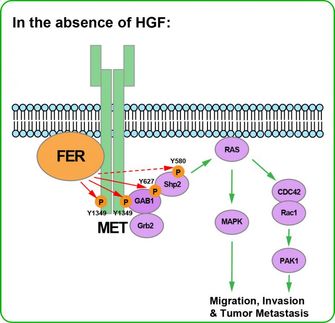New screening tool could speed development of ovarian cancer drugs
Advertisement
University of Chicago Medicine researchers have built a model system that uses multiple cell types from patients to rapidly test compounds that could block the early steps in ovarian cancer metastasis. Their three-dimensional cell-culture system, adapted for high-throughput screening, has enabled them to identify small molecules that can inhibit adhesion and invasion, preventing ovarian cancers from spreading to nearby tissues.
The study in the Nature Communications, is the first to describe a high-throughput screening drug-discovery platform for ovarian cancer that mimics the structural organization and function of human tissue. The model reconstructs the surfaces of the omentum and the peritoneum, membranes that line the abdominal cavity, which are the most frequent sites of ovarian cancer metastasis.
"Visualizing how cancer cells interact with a tumor microenvironment that accurately reflects the complex biology of ovarian cancer should help us understand the mechanisms underlying metastatic progression as well as identify new therapeutics that can inhibit this process," said clinical gynecologic oncologist Ernst Lengyel, MD, PhD, senior author of the study and a professor of obstetrics and gynecology at the University of Chicago.
This is a long overdue step forward for ovarian cancer therapy. The current treatment for metastatic ovarian cancer is surgery and chemotherapy, which has a low five-year survival rate. Although recently approved therapies can increase progression-free survival by a few months, "we think this novel screening system has the potential to uncover new, more effective medications that could be targeted more specifically at a patient's cancer," Lengyel said.
To assemble their model, the researchers collected non-cancerous omental tissue from patients undergoing abdominal surgery. In the laboratory, they isolated and cultured mesothelial cells and fibroblasts, two of the predominant cell types found in omental tissue. Then they combined these cells with extracellular matrix proteins to generate a multi-layered cell-culture model.
The authors were able to miniaturize their model for use in high-throughput screening (HTS), a drug discovery process that can quickly determine the biological or biochemical activity of thousands of compounds. Because HTS has traditionally been performed on an unrealistic platform - monolayers of cancer cells cultured on plastic surfaces - many drugs that seemed promising in initial screens proved ineffective in clinical testing.
So the researchers developed a new system that better reflects human biology and is specific to ovarian cancer. Instead of growing cancer cells on plastic, they inserted a multi-layered omental tissue culture model into each well of a 384-well or 1536-well HTS platform.
Next, ovarian cancer cells, expressing a fluorescent marker to distinguish them from the other cells, were added. Then the wells were exposed to a library of small-molecule compounds. The numbers of ovarian cancer cells that adhered to and invaded the HTS model were counted, and the inhibitory potential of each compound evaluated.
In a primary screen, the researchers identified 17 compounds that inhibited cancer cell adhesion and invasion by at least 75 percent. Six of these compounds were active in a dose-response relationship in three distinct ovarian cancer cell lines. Four compounds significantly inhibited key ovarian cancer cell functions in the early steps of metastasis at low doses.
The research team confirmed those results by testing the four compounds at a low dose in mice injected with ovarian cancer cells. Remarkably, all four compounds inhibited metastasis. Two compounds more than doubled survival. In a follow-up study, one of the compounds--beta-escin, isolated from the seed of the Chinese horse chestnut--inhibited tumor growth and metastasis by 97 percent.
"This study was based on our initial tests of 2,420 compounds," said first author Hilary Kenny, PhD, a research associate (assistant professor) in obstetrics and gynecology at the University of Chicago. "Our model has since been used to test more than 68,000 compounds. This could exceed 100,000 by the end of this year. We are learning to identify compounds with similar structures and functions that may be important for inhibiting key steps in metastasis."
This project emerged as a result of the patient-oriented approach taken by the researchers and clinicians. It is "an important step towards personalized medicine, as described in the new precision medicine initiative proposed by President Obama," Kenny said. "In the future, organotypic models that reflect the unique biology of individual patients could be used in screening. Therefore, personalized high-throughput screening platforms could enable the identification of effective therapeutics for each patient. This is exactly how personalized medicine is supposed to work."
Other news from the department science
Most read news
More news from our other portals
See the theme worlds for related content
Topic world Cell culture technology
Cell culture technology is a central pillar in biotechnological and pharmaceutical research and development. It enables the growth and maintenance of cells under controlled laboratory conditions, providing a window into the molecular and cellular processes of life.

Topic world Cell culture technology
Cell culture technology is a central pillar in biotechnological and pharmaceutical research and development. It enables the growth and maintenance of cells under controlled laboratory conditions, providing a window into the molecular and cellular processes of life.



























































